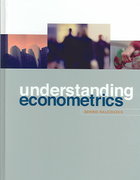Question
1. Suppose that policies that would sharply reduce global greenhouse gas emissions(mainly CO2) would cost one trillion dollars per year over each of the next
1. Suppose that policies that would sharply reduce global greenhouse gas emissions(mainly CO2) would cost one trillion dollars per year over each of the next 25 years, and that these reduced emissions would provide estimated ecological and economicbenefits equal to $100 billion in 10 years, and growing $10 billion in each year afterthat until annual benefits reach $1 trillion per year, and then remain at $1 trillion per year indefinitely thereafter. This schedule of costs and benefits is illustrated infigure 1 below. Assume these values are real, inflationadjusted projections.
Figure 1: Projected costs and benefits of curbing greenhouse gas emission (hypothetical)
(a) Describe how one ought to go about accounting for these costs and benefitsover time in order to discern whether the overall benefits exceed the overallcosts.
(b) Suppose a discount rate of 2% were applied to both costs and benefits, whichis roughly OMB's current guideline for very long-run benefits and costs. Usingthis discount rate, what is the present value of costs? What is the presentvalue of benefits? Are the policies worthwhile? (NOTE: You will need to usea computer to make these calculations. You may use a spreadsheet programlike Excel or other software you may prefer. I like to use "R," a free program-ming/statistics package freely available at www.r-project.org. When you designyour program, make it easy to change the discount rate.)
(c) repeat exercise (b) for each of the following discount rates: 1% for both costsand benefits, 5% for both costs and benefits, 7% for both costs and benefits.Try other discount rates you might think are appropriate.
(d) Suppose you are unsure about which discount rate is most appropriate. Is itbetter to err by using a rate that is too low or one that is too high? In otherwords, if the unknown "true" discount rate should be one number, but youuse a number in your benefit-cost analysis that is randomly different from thetruth, do you make a larger error in terms of the net present value if you usea discount rate that is too low or a discount rate that is too high? How mightthis matter?
2. Some environmental laws in the United States explicitly prohibit the use of benefit-cost analysis in some areas of environmental policy. For example, the Clean AirAct declares that air quality standards are to be determined purely on the basis ofprotecting public health with "an adequate margin of safety," and forbids the admin-istrator of the Environmental Protection Agency from considering costs in settingstandards. Can you provide a critique of such an approach, from the perspective ofeconomic efficiency? What might be the consequences of such an approach? Nowtake a step back. From your own perspective, do you think such an approach isadvisable? Why or why not?
3. Briefly explain the difference betweenutilitarianandcategorical imperativemoralphilosophies. Which philosophy would be more likely to ascribe to economic effi-ciency as an appropriate guide for decision making? Explain.
4. Do you think Rawlsian "veil of ignorance" moral philosophy is consistent with orcontrary to utilitarianism? Explain your reasoning.
5. what are some of the critiques of economic benefit-cost analysisas described by Keohane and Olmstead and what are their counter-arguments?Which critique do you find most persuasive? Explain why you find it persuasiveand Keohane and Olmstead's counterargument less persuasive.

Step by Step Solution
There are 3 Steps involved in it
Step: 1

Get Instant Access to Expert-Tailored Solutions
See step-by-step solutions with expert insights and AI powered tools for academic success
Step: 2

Step: 3

Ace Your Homework with AI
Get the answers you need in no time with our AI-driven, step-by-step assistance
Get Started


